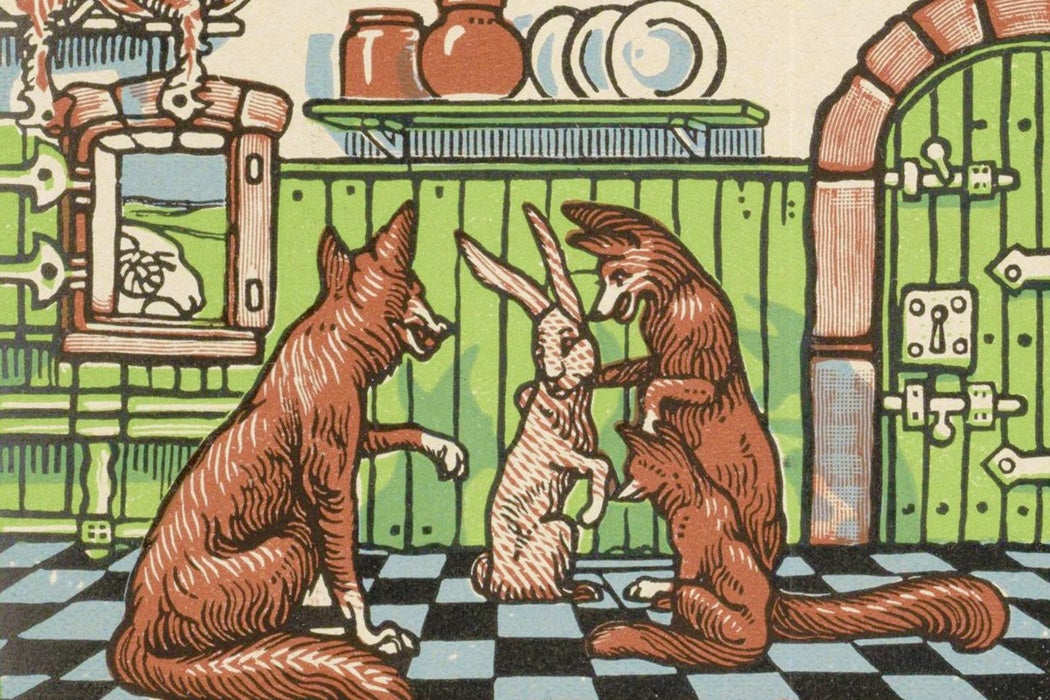We all know about foxes. In stories, movies, and songs, they’re quick, cunning, and, at times, foxy. Humans have been attributing these qualities to foxes for a long time, as folklore scholar Hans-Jörg Uther explores.
Uther notes that foxes live across most of the world—including throughout Europe, in much of Asia, and in parts of the Americas. And people in many of these places have invented stories about them. Ancient Egyptians portrayed the fox as a musician, as a guardian of geese, and as a servant of mice. The Achomawi, of what’s now northeastern California, tell a story of how the fox and coyote created the Earth and humanity.
In Greek and Roman tales, as well as parables found in the Jewish Talmud and Midrashim and stories in the Indian Panchatantra, foxes are often tricksters. They defeat stronger animals through cleverness. Depending on the location, the fox’s mark may be a bear, a tiger, or a wolf. In one story, the fox convinces the wolf to free him from a well by jumping in the other bucket, becoming trapped himself. In another, the fox uses flattery to get a raven to sing, dropping the cheese he had been carrying in his mouth.
However, Uther notes, sometimes the fox himself is deceived. In an Eastern European variant on the story of the tortoise and the hare, a crayfish hitches a ride on the fox’s tail and then pretends to have reached the finish line first. And in the Black American story of Br’er Rabbit, the rabbit tricks the fox into throwing him into the thorn bush where he lives.
Early and medieval Christians often used foxes as a symbol of demonic forces, because the slyness attributed to them suggests heresy and deceit. In some medieval legends of saints, the devil appears in the shape of a fox.
Weekly Newsletter
In China, Korea, and Japan, Uther writes, foxes may appear either as divine or demonic creatures. And, long before Jimi Hendrix wrote “Foxy Lady,” East Asian tales described the creatures transforming into beautiful women. In the second century CE, Chinese stories had foxes taking on the guise of seductresses only to drain men’s life force. These vixens could be spotted because they always wore the same clothes, did not grow old, and loved chicken meat and strong liquor.
But foxes took on a different role in European magic tales, in which they often helped a human escape danger or complete a quest out of gratitude for an act of kindness. Often, these stories ended with the fox asking the human to slay it, upon which it took its true form as a human.
This of course raises an important question: if a fox asks you for a favor, should you help it out in hopes of reciprocal assistance down the line or make a quick exit before you become the trickster’s next victim?
Support JSTOR Daily! Join our new membership program on Patreon today.







